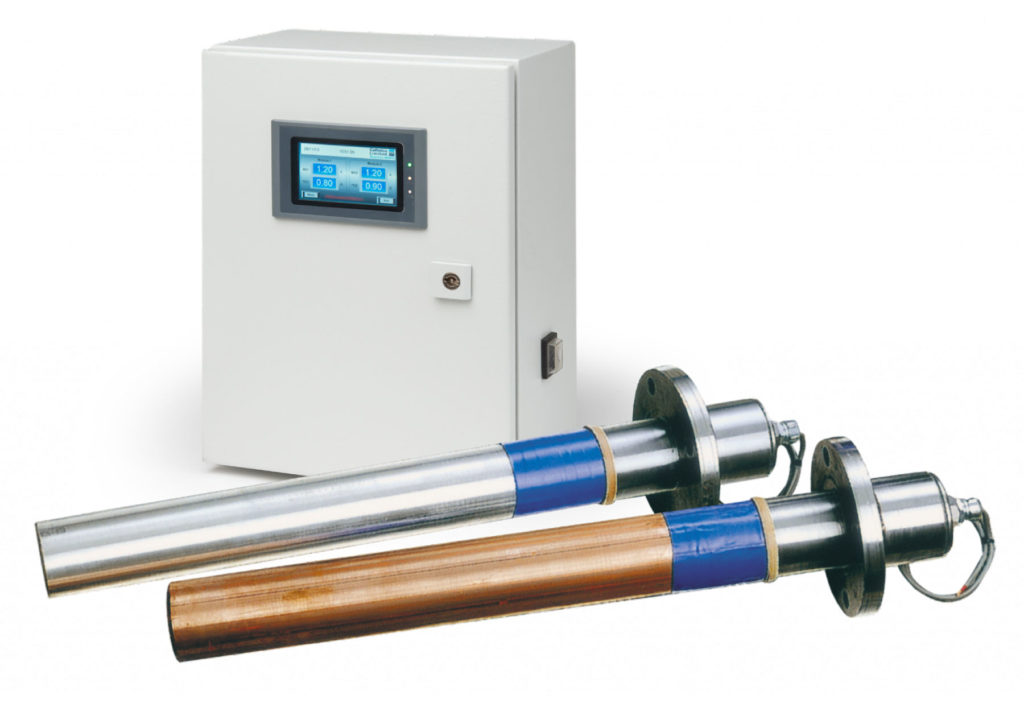Better biofouling reduces costs and emissions
As shipping grapples with tightening emissions regulations, Dr Sasha Heriot, Product Development Business Manager, Cathelco, explains how a proactive approach to biofouling management can deliver cost savings and environmental benefits.

Dr Sasha Heriot, Product Development Business Manager, Cathelco
Keeping vessels in continuous operation presents an ongoing challenge in the maritime industry. Harsh marine environments pose a constant threat of corrosion, compromising vessel integrity. Furthermore, unchecked marine growth within seawater intake systems and on hulls not only undermines operational efficiency, but also increases fuel consumption and associated greenhouse gas (GHG) emissions. Compounding these challenges, traditional hull fouling management practices are becoming less effective. That said, taking a comprehensive approach to biofouling management reduces both costs and emissions.
Understanding biofouling and its impact
Biofouling, the rapid accumulation of aquatic organisms on submerged vessel parts, poses significant challenges to maritime operations and marine ecosystems. As soon as a vessel hits the water, the biofouling sequence begins and algae forms within hours, paving the way for macro fouling like barnacles and mussels. These organisms increase drag and raise the engine load, which in turn diminishes vessel performance, fuel efficiency, and leads to higher operational costs and GHG emissions.
Effective biofouling management is crucial to combatting these challenges. By preventing the accumulation of microorganisms and marine animals, the spread of invasive species is prevented while maintaining smooth hulls, enhancing the hydrodynamic performance of vessels, durability, and functionality, thereby reducing friction, fuel consumption, and associated emissions. Without proactive measures, vessels face heightened risks and reduced service life, emphasising the urgency of early-stage prevention.
Ensuring regulatory compliance
Alignment with regulatory frameworks and global initiatives underscores the critical role of biofouling management in steering the maritime sector towards sustainability. The International Maritime Organization (IMO) identifies biofouling management as an important part of a decarbonised future, citing it as a key optimisation element for its Carbon Intensity Calculator (CII). An IMO study reveals that maintaining a clean hull could potentially reduce fuel consumption by 25%, aligning with the IMO’s GHG Strategy aiming for a 40% reduction in carbon intensity by 2030 and net-zero emissions by 2050.
Biofouling not only impacts fuel efficiency but also poses ecological risks by spreading invasive species which wreak havoc in marine habitats, endangering indigenous species. Recognising this, the IMO introduced Biofouling Guidelines, updated in 2023, to prevent the spread of invasive species and underlining the global importance of effective biofouling control. Vessels worldwide are required to implement Biofouling Management Plans, with similar regulations in regions such as California, New Zealand, and Australia. Adherence to national biofouling requirements is essential, with penalties for non-compliance. This unified approach reflects the imperative of globally consistent practices to safeguard marine ecosystems and promote sustainable maritime practices worldwide.
Biofouling prevention methods
Traditional hull fouling management methods such as antifouling paint and manual cleaning have long been relied upon in the maritime industry, but they aren’t without their challenges. Antifouling paints contain biocides which, although initially effective, raised environmental concerns due to toxic chemicals, leading to tightening regulations. Manual cleaning during drydocking or with divers while anchored is labour-intensive, expensive, and poses safety implications. These methods both demand frequent maintenance and inspections, causing significant downtime and operational disruptions.
Owners and operators are increasingly recognising the benefit of proactive solutions like marine growth prevention systems (MGPSs) and ultrasonic antifouling systems, which work in tandem with reactive solutions to biofouling. MGPSs prevent marine organisms from colonising in seawater piping and other critical areas, reducing maintenance associated with marine growth removal during drydock visits, keeping vessels in service longer.
Ultrasonic antifouling systems, like Cathelco’s USP DragGone, complements antifouling paint by maintaining a clean hull surface from day one. Transducers mounted inside the hull emit ultrasonic waves, disrupting biological attachments and preventing the accumulation of microorganisms without harmful chemicals, improving hydrodynamic performance, corrosion resistance and fuel efficiency by up to 13%.
These proactive approaches not only outperform traditional methods but also contribute to environmental sustainability, aligning with global efforts to reduce GHG emissions. As vessel operators seek superior performance and long-term cost savings, a combination of MGPSs and ultrasonic protection are providing effective results for hull fouling management.
Technological advancements in ultrasonic protection
Cathelco’s patented DragGone ultrasonic antifouling system leverages guided wave and heterodyning technology, pioneering their application for this use, and offering significant advancements in biofouling management.
Guided wave technology, traditionally used in non-destructive testing, channels ultrasonic energy along structures such as hull plates for an enhanced range of protection. Heterodyning technology, originally used in radio frequency tuning, creates multiple frequencies to target a wider spectrum of fouling organisms in diverse environments effectively. The capability to adapt to varying fouling conditions makes it a reliable solution for vessels operating in different regions and seasons. This dual approach ensures superior protection and reduces the need for transducers by 60%, significantly cutting down on maintenance, cleaning costs and overall operational expenses.
Real-world case studies and pilot installations on a range of vessels including ferries and superyachts demonstrate tangible benefits on vessel performance. In addition to practical deployments, collaborations with esteemed institutions and participation in projects like the ‘Cleanship’ initiative, funded by the EU, further validate the effectiveness of guided wave technology in antifouling applications.
Installation and maintenance
Proactively protecting against hull fouling through tailored biofouling management solutions guarantees optimal performance and operational efficiency from the outset. For example, Cathelco’s marine growth prevention systems (MGPSs), found on more than 15,000 ships worldwide, are easy and economical to install and eliminate blockages in interior piping systems caused by barnacle and mussel growth, extending pipe lifetime. Ultrasonic protection systems like Cathelco’s offer lower installation and operational costs due to the reduced requirement for transducer locations, cable runs and control panels, making the system more reliable and easier to manage.
In addition, installation doesn’t require drydocking or hull penetrations. Instead, a pre-installation survey determines ideal transducer and control panel placement. Installation, overseen by a service engineer, is internal and without hot work, ensuring simplicity and efficiency. And regular check-ups post-installation maintain performance, with easily exportable data for ongoing monitoring.
This streamlined approach reflects the industry’s commitment to operational readiness and efficiency, minimising downtime and associated costs while maximising vessel performance.

Cathelco’s marine growth prevention systems (MGPSs) are found on more than 15,000 ships worldwide
Outlook
In today’s operating context, realising efficiencies, minimising costs and reducing emissions are all central to successful operations. Embracing innovation in biofouling solutions directly supports all of this, enabling regulatory compliance and fleet performance optimisation, while reinforcing the commitment to sustainability through the preservation of marine ecosystems. When economic and environmental sustainability go hand in hand, everyone benefits.




